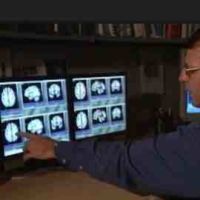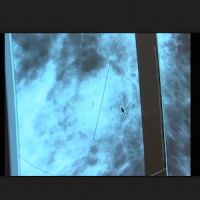Throughout the opening session held this morning here at RSNA, one word was omnipresent: Innovation
Ronald L. Arenson welcomed John Boone President American Association of Physicists in Medicine (AAPM), who presented his greetings to the attendees at McCormick Place’s packed Arie Crown Theater.
Setting the tone for the morning’s theme of future, innovation and much-needed change, Kenneth L. Pierce, President Chicago Radiological Society, delivered an eerily realistic presentation of the world’s most recognised technology giant’s latest, albeit fictional, medical device: the iRad. With over one million radiology studies performed annually, this virtual radiologist is capable of speaking ICD-10, decipher vague patient history and enjoy Siri-enabled communication in every language imaginable. Thanks to its remarkable success, it will soon be followed up by the iPath, the iCU and the iMedicalCenter, to name but a few future inventions. Coming soon! Really?
Following on from Kenneth Pierce and introducing the President’s Address, William P. Dillon, MD, First VP RSNA, offered a brief look back to the state of radiology technology in 1992, the year that RSNA president Arenson joined UCSF: 2 MRI scanners, 2 CT scanners, no PACS, no email, no browsers, no electronic billing and film scattered everywhere. Fast-forward to 2015, and the departments boasts 20 MRIs, 10 CTs, 3 PET/CTs, 2 outpatient imaging centres and performing over 500,000 imaging studies annually thanks to Ronald Arenson’s impact over the past two decades.
Taking to the stage, Arenson began his address by saying there had never been a time more exciting than now to be in the field of radiology. Aptly titled ‘Going Boldly into Radiology’s Technological Future: Why our Profession Must Embrace Innovation’, his presentation centred around the main message that today’s radiologists are contributing authors to the future of radiology.
To adapt to the evolving landscape in healthcare, radiology must change to stay integrated and continue to deliver. Costs keep increasing, more must be done with fewer resources, and technology developments in IT are offering opportunities for critical innovation. Metabolic and molecular imaging has led to earlier detection. High Intensity Focused Ultrasound (HIFU) is fast expanding across disciplines. Steerable catheters will soon receive FDA approval, transarterial chemoembolisation is reducing drug amounts, and many more advances are on the way.
Futuristic devices from the 1960s Star Trek are the norm today: think Captain James Kirk’s team with handheld communicators = our mobile phones, their video monitors = our Skype/FaceTime, their phasers = our taser guns – and so on.
As these technological trends are making their way into radiology, the challenge lies in how to turn this potential into reality. To the radiologists called upon to help write the story of radiology, Arenson offers these tips:
• Become technology adopters
• Be patient centric – focus on the human connection
• Participate in Image Share and IHE
• Participate in quantitative imaging
• Boldly go where no man has gone before
Ronald Arenson closed his address by thanking the organisation for the privilege of being the RSNA president at the dawn of their new century.
Carine Khoury
Managing Web Editor, HealthManagement.org
Ronald L. Arenson welcomed John Boone President American Association of Physicists in Medicine (AAPM), who presented his greetings to the attendees at McCormick Place’s packed Arie Crown Theater.
Setting the tone for the morning’s theme of future, innovation and much-needed change, Kenneth L. Pierce, President Chicago Radiological Society, delivered an eerily realistic presentation of the world’s most recognised technology giant’s latest, albeit fictional, medical device: the iRad. With over one million radiology studies performed annually, this virtual radiologist is capable of speaking ICD-10, decipher vague patient history and enjoy Siri-enabled communication in every language imaginable. Thanks to its remarkable success, it will soon be followed up by the iPath, the iCU and the iMedicalCenter, to name but a few future inventions. Coming soon! Really?
Following on from Kenneth Pierce and introducing the President’s Address, William P. Dillon, MD, First VP RSNA, offered a brief look back to the state of radiology technology in 1992, the year that RSNA president Arenson joined UCSF: 2 MRI scanners, 2 CT scanners, no PACS, no email, no browsers, no electronic billing and film scattered everywhere. Fast-forward to 2015, and the departments boasts 20 MRIs, 10 CTs, 3 PET/CTs, 2 outpatient imaging centres and performing over 500,000 imaging studies annually thanks to Ronald Arenson’s impact over the past two decades.
Taking to the stage, Arenson began his address by saying there had never been a time more exciting than now to be in the field of radiology. Aptly titled ‘Going Boldly into Radiology’s Technological Future: Why our Profession Must Embrace Innovation’, his presentation centred around the main message that today’s radiologists are contributing authors to the future of radiology.
To adapt to the evolving landscape in healthcare, radiology must change to stay integrated and continue to deliver. Costs keep increasing, more must be done with fewer resources, and technology developments in IT are offering opportunities for critical innovation. Metabolic and molecular imaging has led to earlier detection. High Intensity Focused Ultrasound (HIFU) is fast expanding across disciplines. Steerable catheters will soon receive FDA approval, transarterial chemoembolisation is reducing drug amounts, and many more advances are on the way.
Futuristic devices from the 1960s Star Trek are the norm today: think Captain James Kirk’s team with handheld communicators = our mobile phones, their video monitors = our Skype/FaceTime, their phasers = our taser guns – and so on.
As these technological trends are making their way into radiology, the challenge lies in how to turn this potential into reality. To the radiologists called upon to help write the story of radiology, Arenson offers these tips:
• Become technology adopters
• Be patient centric – focus on the human connection
• Participate in Image Share and IHE
• Participate in quantitative imaging
• Boldly go where no man has gone before
Ronald Arenson closed his address by thanking the organisation for the privilege of being the RSNA president at the dawn of their new century.
Carine Khoury
Managing Web Editor, HealthManagement.org
Latest Articles
RSNA, innovation, change management
Throughout the opening session held this morning here at RSNA, one word was omnipresent: Innovation



























